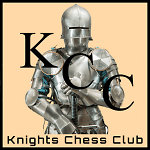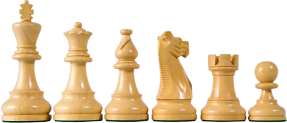
Knights Chess Club
Welcome To All, Young And Old


Anecdotal Materials
Several articles discuss chess as a tool to assist children of all levels.
Dr. Stefurak, a cognitive neuropsychologist, stated that ``chess instruction informs the mind and the emotions in such a way as to structure an emergent mental circuit where motivation and ability multiply to produce achievement in chess and school and life.'' [23]
In December 1996, Arman Tajarobi wrote: ``For the past three years, I've been a witness to an experiment held in 24 elementary schools in my town: The school board allowed these schools to replace an hour of math classes by a chess course each week for half of their students. For three consecutive years, the groups who received the chess formation have had better results in math than those who did not. This year (the fourth year), the school board has allowed any school that wants to provide its students with a chess formation to do so.'' [35]
John Artise (B.S., M.A.) draws upon his years of psychological research in chess to identify the contribution chess makes in education and learning. He identifies four areas of growth: memory improvement, logic, observation and analysis, and operant conditioning. ``Chess and Education,'' John Artise. [31]
The chess program funded by Oakland (California) Youth at Risk program proves to be an effective vehicle for saving troubled youth. [32]
Chess program in the troubled East Harlem district, New York, also rescues kids from drugs and gangs. [33]
Saratoga Springs editorial: ``Chess is the last best hope for this country to rescue its skidding educational system and teach the young generation the forgotten art of nurturing an attention span.'' [34]
In his book ``Your Child's Intellect,'' former U.S. Secretary of Education Terrell Bell encourages some knowledge of chess as a way to develop a preschooler's intellect and academic readiness (Bell, 1982, pp. 178-179). [44]
NOTES
- Kathleen Vail, ``Check This, Mate: Chess Moves Kids,'' The American School Board Journal, September 1995, pp. 38-40
- John Artise, ``Chess and Education.''
- San Jose Mercury News, 4-3-96.
- Jo Coudert, ``From Street Kids to Royal Knights,'' Readers Digest, June 1989.
- ''Editorial: Chess gives hope for our youth,''
- Arman Tajarobi, e-mail from December, 1996.
- Terrell Bell, Your Child's Intellect, 1982, pp. 178-179.
Material excerpted or adapted from the Illowa Chess Club: TEACHER'S GUIDE: RESEARCH AND BENEFITS OF CHESS by Dr. Robert C. Ferguson






